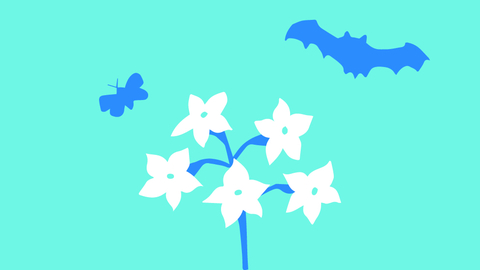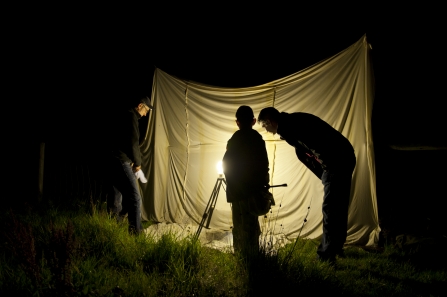
How to attract moths and bats to your garden
Flowers that release their scent in the evening are a big draw for moths so planting them is a great way of attracting moths into your garden. They also give us the pleasure of sweet perfume, striking silhouettes and luminous glow. As with other flowering plants, you'll need to think about where best to locate them. Although they give off their scent at night, they still need the right conditions in the daytime.
Flowers that release their scent in the evening are a big draw for moths

Honeysuckle - ©northeastwildlife.co.uk
As well as planting the right flowers, if you garden with moths and their caterpillars in mind, you will have a whole range of fluttering friends coming to visit. Try the following:
- Have a diverse range of plants, shrubs, grasses and flowers to provide foodplants for caterpillars.
- Plant native trees like willow and oak.
- Reduce your chemical use and keep hard landscaping (gravel, decking, etc.) to a minimum to increase the habitats available.
- Don’t be so tidy! Leave areas of long grass and wild plants, and don’t clear up dead plant matter at the end of the year – caterpillars and pupae may overwinter here.
| Night-time nectar providers | Ten foodplants for the caterpillars of moths |
|
Argentinian vervain |
Common hawthorn |
| Tobacco plant | Currants |
| Common jasmine | English oak |
| Evening primrose | Hazel |
| Globe artichoke | Holly |
| Hebe | Hop |
| Honeysuckle | Ivy |
| Miss Willmott's ghost | Stinging nettle |
| Sweet rocket | White willow |
| Fushia |

Ross Hoddinott/2020VISION
Moth trapping
Set up a moth trap to see who visits your garden at night. Moth trapping might sound cruel, but it doesn’t hurt the moths; it simply involves attracting them to a light or food source so that you can take a closer look. Setting up a moth trap at home:
- Buy a traditional moth trap – available online, but expensive. A great option for serious moth recorders.
- Make a light trap - all you need is a white sheet and a torch. Peg the sheet on your washing line, turn off nearby lights, switch on your torch, and wait patiently to see who flutters in.
- Use a wine rope – some moths are more attracted to sugary treats than light, so try soaking strips of an old cloth in a mixture of cheap red wine and sugar, hang the strips over your washing line, and check them for visitors after a couple of hours.
- Turn the bathroom into a moth trap – open your bathroom window and turn on the light, leaving it for an hour or so. On a warm night, moths will fly inside and you can return to see who has come to visit. Don’t forget to catch and release the moths later on!


